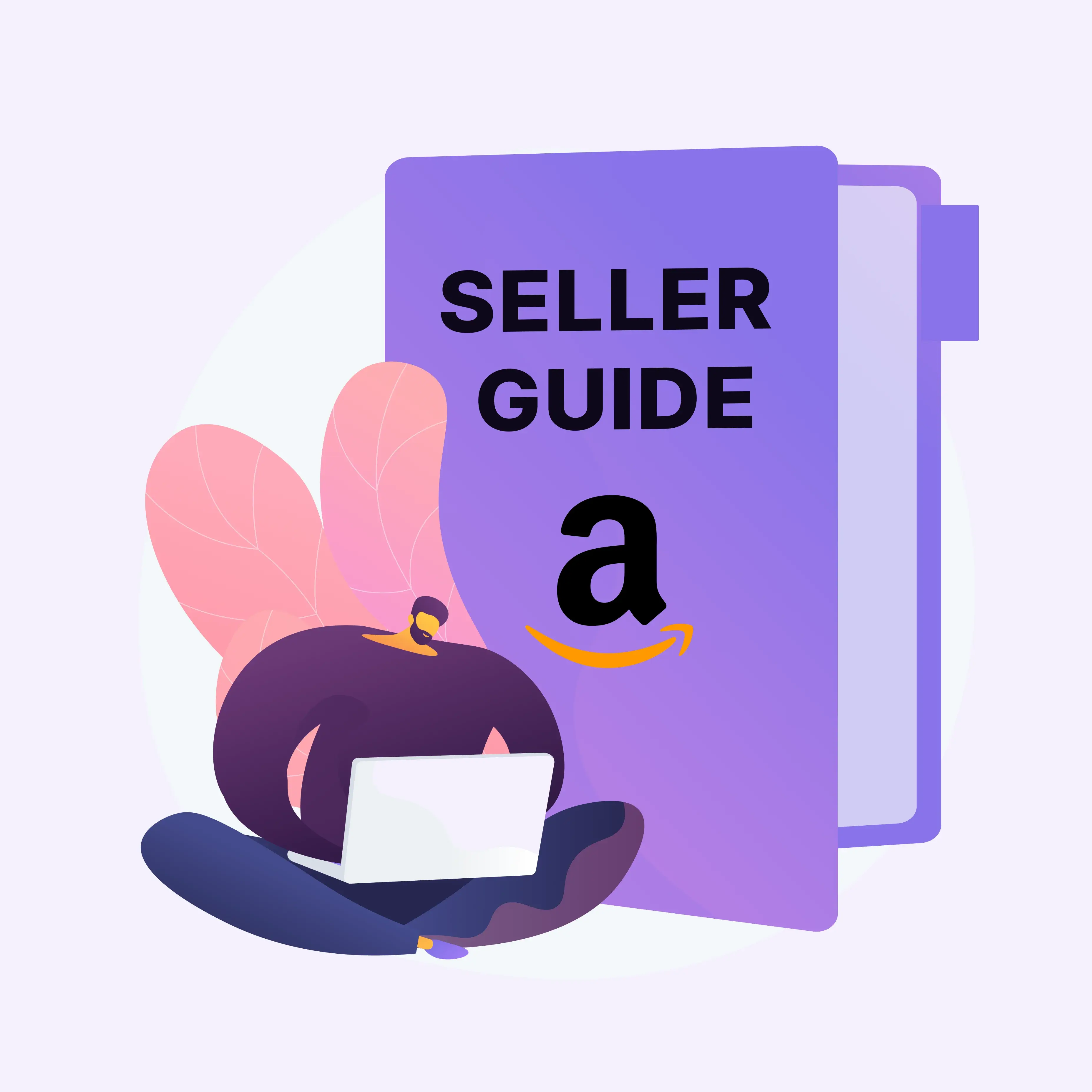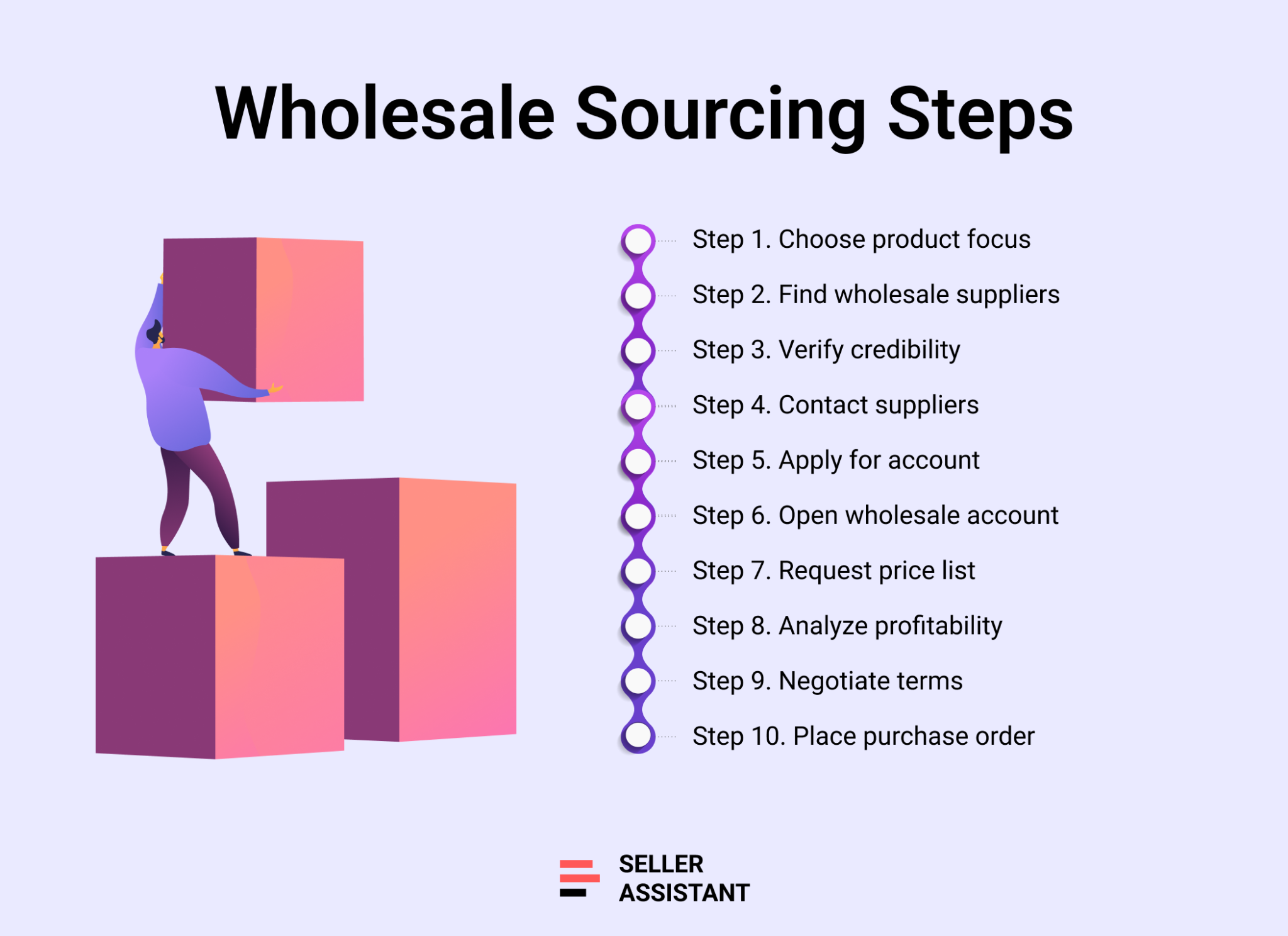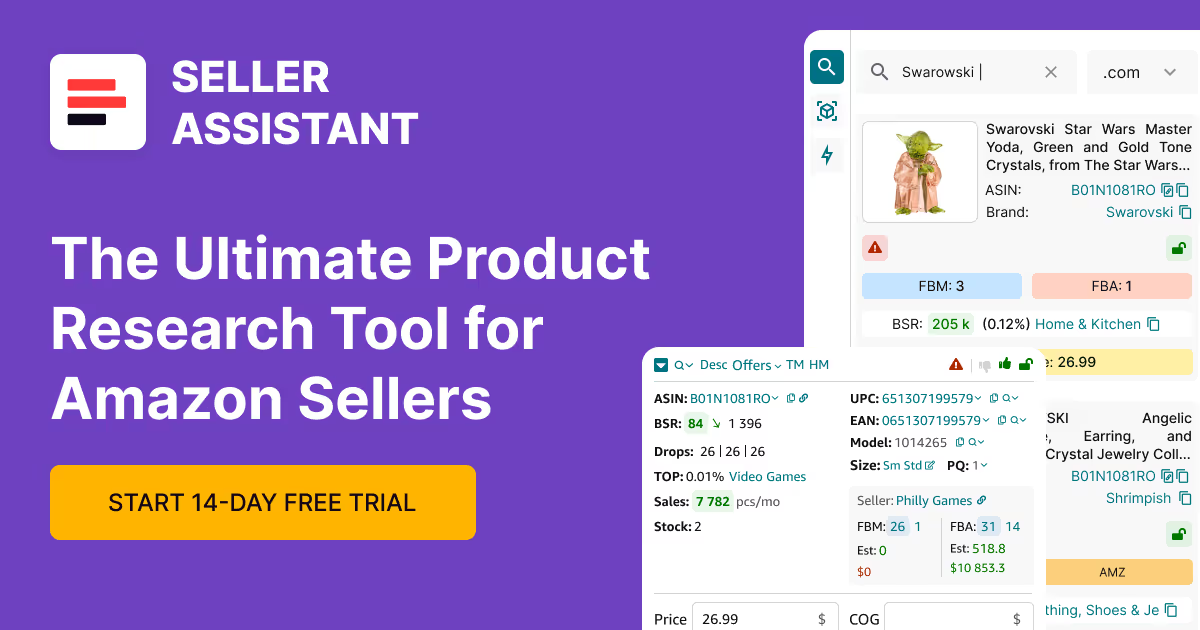Sourcing Wholesale Products for Amazon
Download Amazon Seller Guide
This guide will help you get started, understand the basics of Amazon selling, and explain in simple words how it all works.

Sourcing wholesale products for Amazon is one of the most reliable ways to build a scalable, long-term business. Instead of chasing random retail deals, you partner directly with brands or authorized distributors, buy in bulk at wholesale prices, and resell for consistent profits.
But success doesn’t come from guessing – it comes from data, structure, and automation. Understanding how wholesale sourcing works, how to choose profitable suppliers, and how to automate research, analysis, and purchase orders can make or break your Amazon business.
In this post, we’ll walk through how to master sourcing wholesale products for Amazon using Seller Assistant tools.
What Is Amazon Wholesale Sourcing?
Amazon wholesale sourcing is the process of purchasing products in bulk directly from brands, authorized distributors, or other wholesale suppliers at discounted wholesale prices, then reselling them on Amazon for retail prices with a profit. Unlike private label sellers, who create their own branded products, or online arbitrage sellers, who buy discounted retail items to flip, wholesale sellers focus on established brands with proven demand and sales history.
Key wholesale sourcing tasks include:
- Researching and selecting product categories and profitable brands
- Identifying and verifying legitimate suppliers or distributors
- Requesting and analyzing supplier price lists for profitable ASINs
- Negotiating terms and opening wholesale accounts
- Creating purchase orders, and routing shipments
The main difference between wholesale and other Amazon business models lies in scale and stability. Wholesale sellers invest upfront to build relationships with brand owners and maintain consistent stock, often achieving repeatable sales and stronger profit margins. Online arbitrage and dropshipping models rely on single-product deals and rapid flips, while wholesale sourcing focuses on long-term supplier partnerships, bulk buying power, and predictable revenue growth.
How Amazon Wholesale Sourcing Works
Amazon wholesale sourcing is a structured process that helps sellers buy branded products directly from legitimate suppliers at wholesale rates and resell them on Amazon for profit. Each stage requires research, communication, and analysis to ensure that every product added to your catalog meets both Amazon’s rules and your profitability goals. Below is a breakdown of how the wholesale sourcing process works – from choosing your niche to making your first purchase order.

Step 1. Choose your product focus
Start by selecting a product category or niche that matches your expertise and market data. Focus on areas where demand is stable and competition is not overwhelming. Use Amazon tools and sales rank metrics to confirm consistent buyer interest and strong resale potential before diving in.
Step 2. Find legitimate wholesale suppliers
Research brands or authorized distributors who serve your target category. Look at the brands your competitors sell – this can reveal strong-performing suppliers worth approaching. To speed up the process, use AI-powered tools that identify brand distributors, helping you find reliable sources faster and avoid outdated or oversaturated directories.
Step 3. Verify supplier credibility
Before starting any partnership, confirm that the supplier is authentic and trustworthy. Check their business registration, online reputation, and how long they’ve been operating. Use resources like LinkedIn, Whois, or ScamAdviser to verify details and avoid fake or gray-market distributors.
Step 4. Make first contact
Reach out to potential suppliers by email or phone to introduce your Amazon business and establish a professional connection. Clearly explain what kind of products you want to buy and the scale of your operation. A friendly, transparent introduction increases your chances of being approved as a wholesale client.
Step 5. Apply for a wholesale account
Most distributors require you to complete a short application before sharing pricing information. You’ll typically need to provide your business license, tax ID, and reseller permit. Filling this out accurately shows that you operate a legitimate business and helps the supplier assess your suitability.
Step 6. Open your wholesale account
After approval, the supplier will issue you a wholesale account granting access to their product catalog and pricing. This account is your main communication and transaction channel for future orders. Keep your company information up to date so invoices and orders process smoothly.
Step 7. Request and scan the price list
Ask for the supplier’s wholesale price list, usually provided in spreadsheet format. This document includes product SKUs, wholesale prices, minimum order quantities, and other product details. You’ll use it to identify potential products that match existing Amazon listings and offer enough profit margin.
Step 8. Analyze product profitability
Compare the supplier’s price list with Amazon data to find profitable ASINs with strong sales performance. Calculate ROI, profit per unit, and all related costs like FBA fees or shipping. Filter out restricted, low-demand, or high-competition products to build a shortlist of winning deals.
Step 9. Discuss pricing and build relationships
Once you’ve found suitable products, contact the supplier to negotiate pricing, order quantities, and payment terms. Consistent orders or large volume purchases can often earn you better discounts. Building a reliable relationship helps secure priority stock and long-term collaboration.
Step 10. Place your first wholesale order
After confirming prices and quantities, create your purchase order and submit it through your supplier’s preferred method. Use secure payment options like wire transfers or business credit cards. This marks the official start of your Amazon wholesale journey – where sourcing transitions into operations and fulfillment.
What Sellers Should Remember About Sourcing
Sourcing wholesale products for Amazon requires persistence, research, and structure. Finding good suppliers can be challenging – it’s normal to reach out to hundreds before being approved by just a few. Don’t blast out a thousand generic emails in a day; instead, focus on sending 10 personalized, high-quality outreach messages daily and stay consistent. Building supplier relationships takes time, but consistency and professionalism make all the difference.
Reliable and authorized suppliers
Work only with verified distributors or brand-approved wholesalers. Avoid intermediaries and unknown sources. A legitimate supplier should provide clear communication, proof of authorization, and consistent product availability.
Supplier terms and buying conditions
Review every supplier’s MOQ (minimum order quantity), payment terms, and MAP (minimum advertised price) policies before ordering. High MOQs can limit flexibility, and MAP rules affect your pricing strategy – understanding both helps you plan cash flow and competition better.
Market demand and product research
Successful sourcing starts with accurate market analysis. Use sales rank, pricing history, and competitor data to identify products with consistent

.svg)













